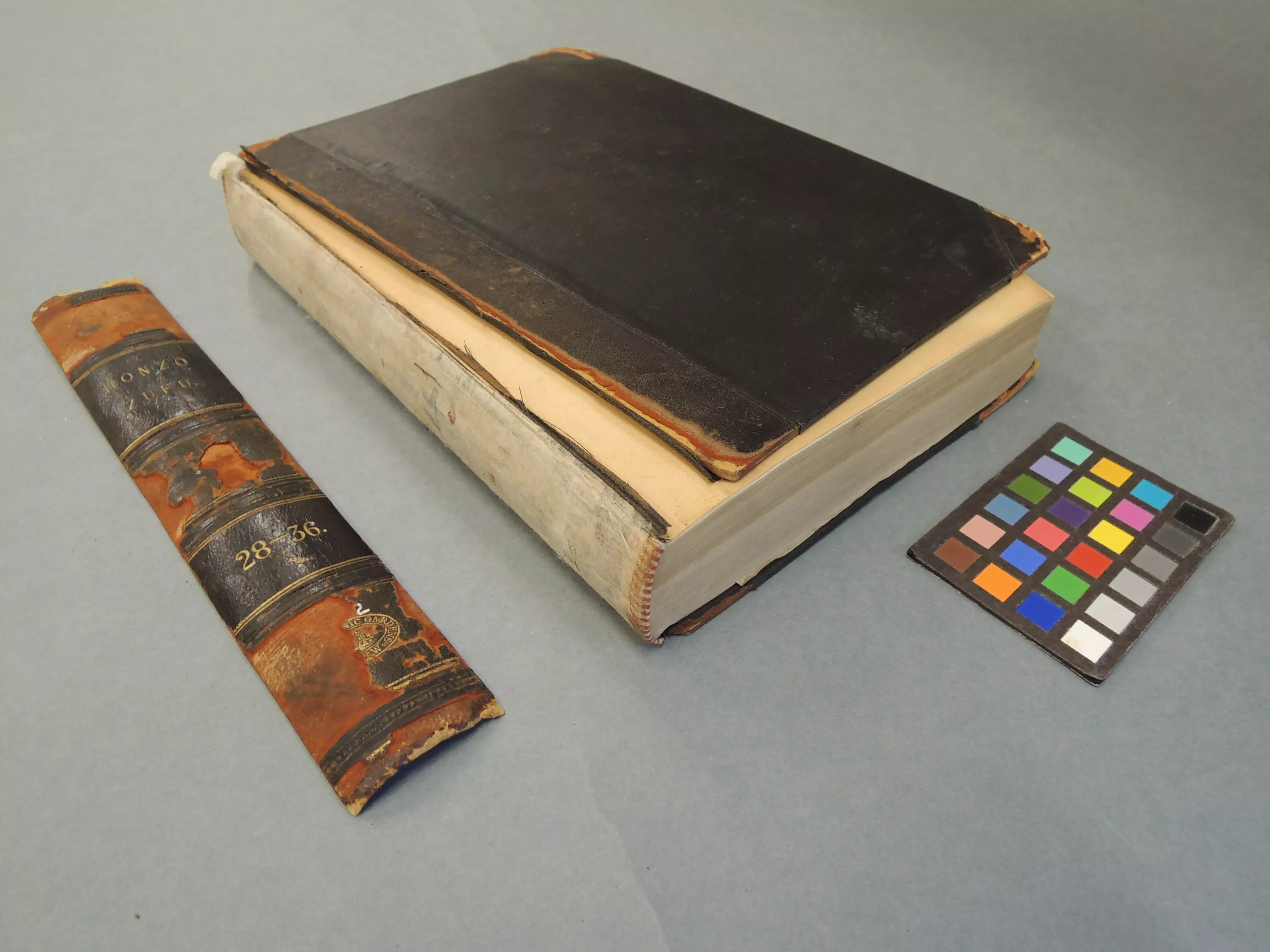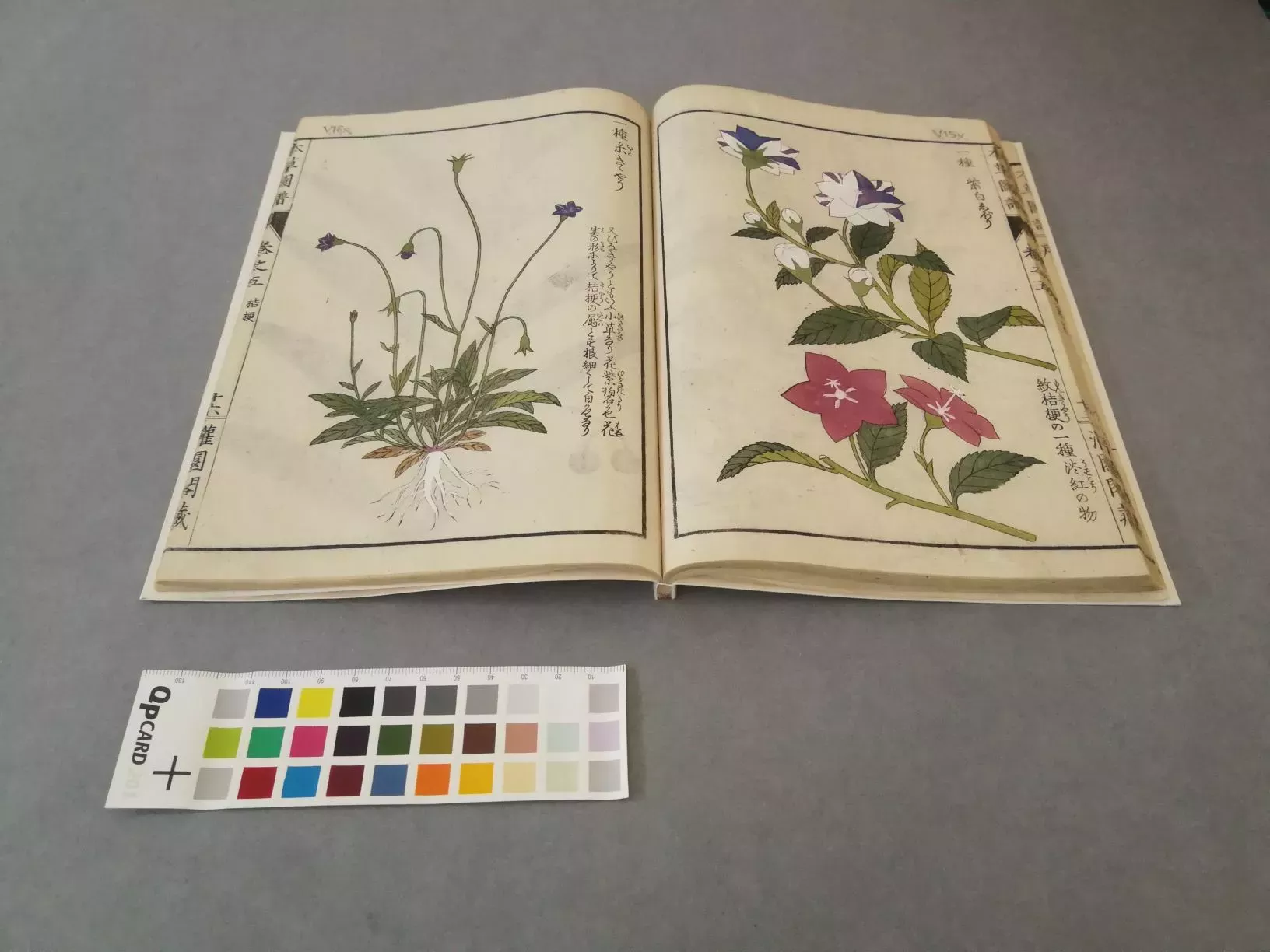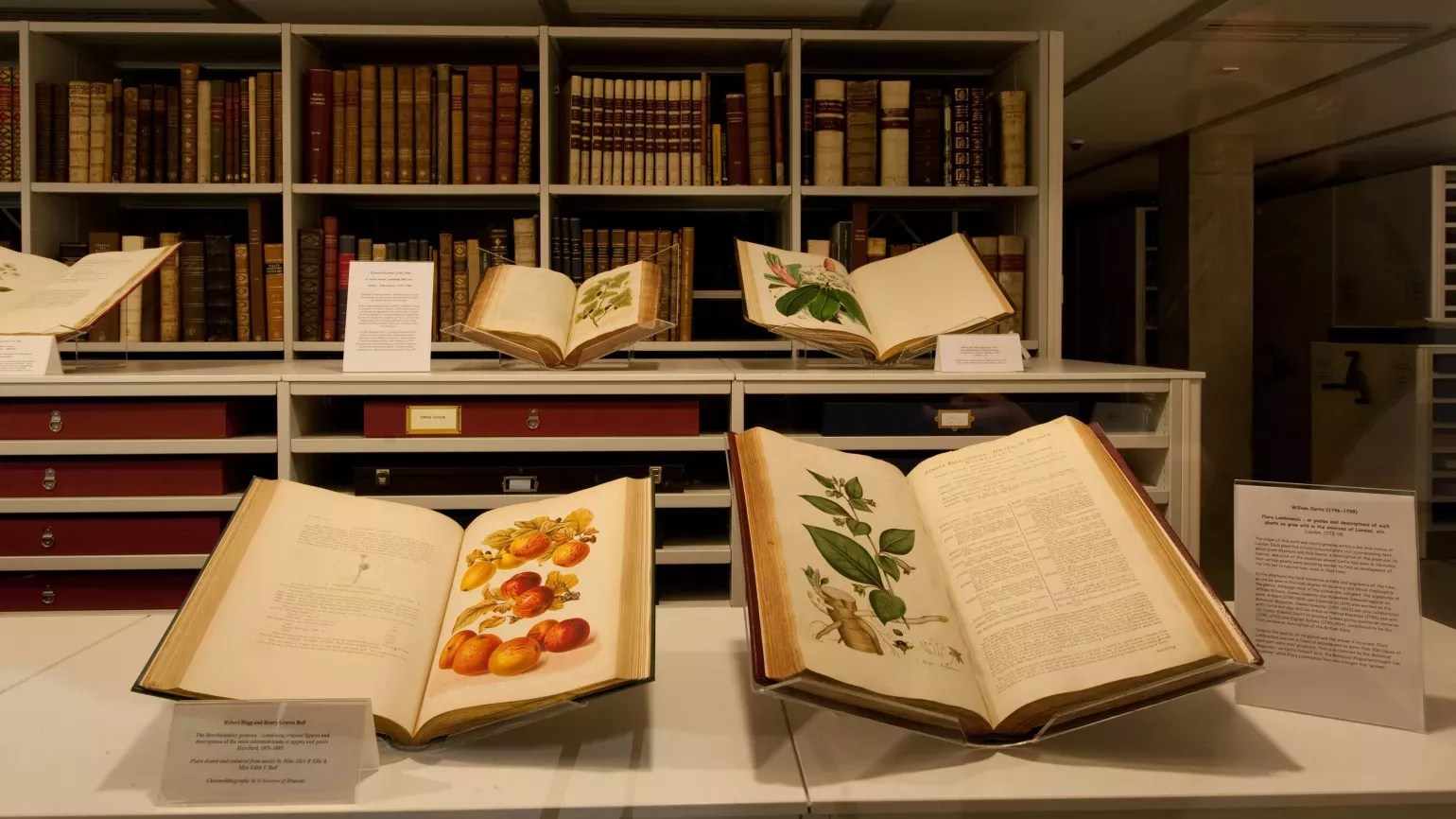22 July 2020
A new lease of life: Conserving one of Kew's rarest works
Discover the story of the beautiful and rare Japanese botanical work Honzō Zufu.

Honzō Zufu dates from the early 19th century. It documents medicinal plants with many stunning illustrations. It was created by Japanese botanist, zoologist and entomologist Kan’en Iwasaki (1786-1842), with the parts appearing from 1828 to 1844.

The set of 89 parts in the Library of the Royal Botanic Gardens, Kew is one of very few worldwide which is available for public viewing.
Before they came to Kew, the volumes were re-bound into 12 Western-style bindings, probably to provide protection to the contents. However, after many decades, these poor-quality bindings were deteriorating and, if left unchecked, would increasingly damage the contents. Urgent conservation was required if the set was to remain accessible to the public.
The project, generously funded by the Toshiba International Foundation, enabled 39 of the 89 volumes to be conserved.

How do you put a ‘broken’ book back together?
As all the Western bindings were failing and non-original, and causing more harm than good, it was decided to remove them and rebind the Honzō Zufu back into its individual volumes in the original Japanese style.
The project involved removing the inappropriate bindings, acidic end papers and animal glue used to secure the pages in the bindings.
Many of the covers and spines of the volumes had already become loose anyway so these were completely removed. The glue was painstakingly cleaned off so that no traces remained. Once this had happened, the volumes were separated out into the original parts. Luckily the pages were generally in very good condition and needed only a few repairs.


The parts were then re-sewn in the Japanese style, with new paper covers, using the original sewing holes.
Specially made boxes were constructed to house a number of parts together, ensuring they can be safely stowed on the Library shelves.
Handsome labels with gold lettering were designed in the style of the original labels, with some of the text written in Japanese. Individual parts have paper labels and the boxes have leather labels.



The work was done by freelance conservator Sarai Vardi, who has a wealth of experience in treating paper and rebinding books. She used to work at Kew, so knows the Honzō Zufu well. Sarai was very keen to do the project and took great care to use authentic materials and techniques.
The newly conserved parts can now be easily and safely viewed by researchers with much less risk of damage through wear and tear. Equally importantly, the individual parts can be easily and safely exhibited, helping to make this wonderful work better known to more people than would ever have been possible before.
The Royal Botanic Gardens, Kew are grateful to the Toshiba International Foundation for funding this conservation project. We would also like to thank the Great Britain Sasakawa Foundation for their generous funding, which will enable a further 18 volumes to be conserved.
The restoration of the remaining 32 volumes will take place once further funding is secured.




